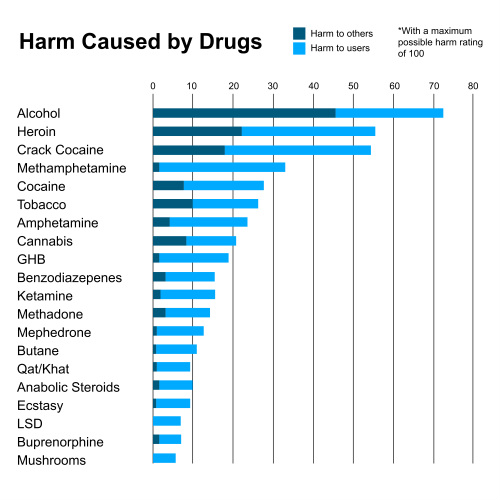- There is increasing evidence linking alcohol consumption to cancer.
- Mechanisms by which drinking alcohol increase the risk of cancer are not yet understood.
- New meta-analysis concludes that alcohol causes cancer of the oropharynx, larynx, esophagus, liver, colon, rectum, and breast.
- “Current estimates suggest that alcohol-attributable cancers at these sites make up 5.8% of all cancer deaths world-wide,” the authors note.
“There is strong evidence that alcohol causes cancer at seven sites in the body and probably others,” according to a study published recently in Addiction. The study links alcohol consumption to cancers of the oropharynx, larynx, esophagus, liver, colon, rectum, and breast. The authors note that “Current estimates suggest that alcohol-attributable cancers at these sites make up 5.8% of all cancer deaths world-wide.”

While the mechanisms by which alcohol causes cancer have not been identified, the authors of the Addiction study note that “Confirmation of specific biological mechanisms by which alcohol increases the incidence of each type of cancer is not required to infer that alcohol is a cause.”
"The highest risks are associated with the heaviest drinking but a considerable burden is experienced by drinkers with low to moderate consumption," explained study author Jennie Connor, MB ChB MPH BSc PhD, in an interview published in the British newspaper The Telegraph. She cautioned that there is no safe level of drinking in terms of cancer prevention. Dr. Connor is Professor in the Department of Preventive and Social Medicine at the University of Otago in New Zealand where she is a public health physician and epidemiologist. She was head of the Department of Preventive and Social Medicine at the University of Otago from 2010 to 2015.
“Confirmation of specific biological mechanisms
by which alcohol increases the incidence of each type
of cancer is not required to infer that alcohol is a cause.”

in the opinion of drug-harm experts. When harm to self and others is summed,
alcohol was the most harmful of all drugs considered, scoring 72%.
(Sources: Wikipedia/By Tesseract2/Creative Commons.)
The Analysis
Dr. Connor reviewed the recent epidemiologic and biological literature on alcohol and cancer. In her analysis she included published meta-analyses from the Medline database and the archives of the International Agency for Research on Cancer. She also included more recent epidemiologic studies that are not currently included in these databases. In the study she made an effort to balance the strength of the evidence that alcohol causes cancer with the evidence that there may be a protective effect of alcohol on cardiovascular disease.
“The strength of the association with alcohol varies by site of the cancer,” Dr. Connor wrote in her study, “being particularly strong for mouth, pharynx and esophagus (relative risk in the range of 4–7 for ≥ 50 g of alcohol per day compared with no drinking) and less so for colorectal cancer, liver and breast cancer (relative risk approximately 1.5 for ≥ 50 g/day).
She continued: “For cancers of the mouth, pharynx, larynx and esophagus there is a well-recognized interaction of alcohol with smoking, resulting a multiplicative effect on risk. Biological evidence is supportive of the carcinogenic potential of drinking alcohol and the interaction with smoking, but mechanisms are not understood fully.”
Dose-Response Relationship
Dr. Connor noted a dose-response relationship between cancer risk and volume of alcohol intake that was identified in a study published in the Journal of the National Cancer Institute, among others. For this reason, she also examined the effects of light to moderate drinking on cancer risk. The United Kingdom's Million Women cohort study “found that during 7 years of follow-up, women who drank between 70 and 140g of alcohol per week had a 5% increase in total cancer compared with those drinking less than 20g per week, and a 13% increase in breast cancer. In this study, alcohol-related risk of aerodigestive cancers was limited to women who smoked, reflecting the multiplicative interaction between these two causes,” she explained.
The results of a meta-analysis published in 2013 found that light drinkers were at increased risk of cancers of the mouth, pharynx, esophagus and breast, but not of colorectal, liver, or laryngeal cancers. Recently published analyses of data from 2 large U.S. cohort studies found that light to moderate drinking in women was associated with an increased risk of cancers known to be associated with alcohol.
“This was due largely to the effect on breast cancer, where a significant increase in risk was seen from the first drink per day. Similar overall findings were seen for men who had ever smoked, but no significant association was seen for male light drinkers who had never smoked,” Dr. Connor explained.

(Sources: Wikipedia/By Emilfarb/Public Domain.)
Others Cancers as Well
Dr. Conner further noted that there is accumulating evidence to identify a causal contribution of alcohol to cancer at sites other than the 7 mentioned above. Specifically, there is reason to suspect that alcohol consumption increases the risk of cancers of the pancreas, prostate, and skin (melanoma), according to an article published in the British Journal of Cancer. A separate study, published in Cancer Causes and Control, noted a risk association between heavy drinking/average drinking and the development of pancreatic cancer.
“The usual epidemiological understanding of a cause is a factor that increases the incidence of a condition in the population. In the context of a body of epidemiological evidence of an association of alcohol consumption with a disease, the inference that it is a causal association requires alternative explanations of the observed finding to be judged unlikely. Even without complete knowledge of biological mechanisms, the epidemiological evidence can support the judgement that alcohol causes cancer of the oropharynx, larynx, esophagus, liver, colon, rectum, and breast,” Dr. Connor concluded.
